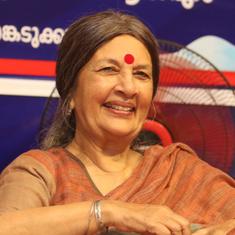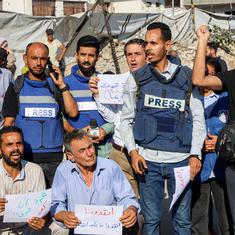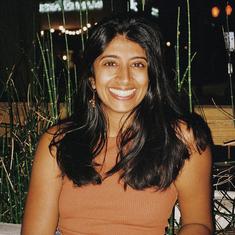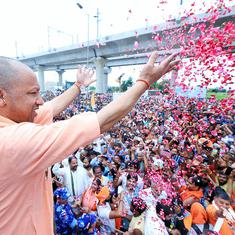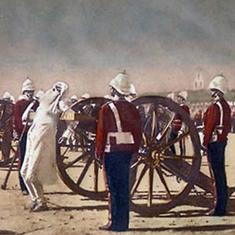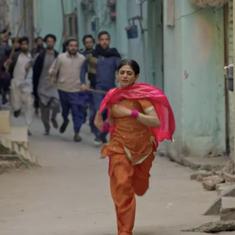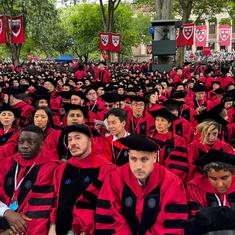In the early 1960s, at the height of the Cold War, the United States viewed Cuba as one of its main security threats as well as an ideological opponent. At the start of the decade, it had tried to invade Cuba along with Cuban exiles in what is called the Bay of Pigs invasion, but failed miserably, leading to a loss of face.
For a while after that, Cuba became shorthand in American media for small neighbours of larger democracies that were either flirting with communism or getting closer to a major communist power. Both Nepal and Sri Lanka were described in US media reports as “India’s Cuba”.
This was a time when the John F Kennedy administration in the US saw democratic India under Jawaharlal Nehru as a friend and the kingdom of Nepal as teetering towards communism. In a report for the news agency United Press International, its foreign correspondent Patrick J Killen called Nepal “India’s Cuba” and “India’s ‘Castro’” a “beadless non-communist king”.
Killen, who worked in Asia for 30 years, said the relations between India and Nepal were rapidly deteriorating as the Himalayan kingdom moved towards China’s camp. “A few years ago, Nepal was known principally for its high mountains (Mt. Everest), its abominable snowman (the Yeti) and its tough export (Gurkha soldiers),” Killen wrote in February 1962. “Today, its 9.5 million people have awakened to the fact that their Arkansas-sized country is jammed between Asia’s two cold war giants, India and China.”
In March 1960, Nepal’s India-educated Prime Minister BP Koirala had visited China’s capital city Peking, now called Beijing, and a year later, the two countries settled their border dispute. “Although most Indians were favourable to Koirala, he helped push Nepal to the road to neutralism,” wrote Killen.
![Cuban forces counter-attack with T-34 tanks during the Bay of Pigs invasion. Credit: Rumlin/Wikimedia Commons [CC BY 3.0].](https://sc0.blr1.cdn.digitaloceanspaces.com/inline/flibyyhpnz-1749546811.jpg)
Whatever his successes, Koirala was deposed in 1960 in a coup d’état by King Mahendra Bir Bikram Shah Dev and imprisoned along with his colleagues. The king suspended the constitution, abolished the parliament, banned political parties, and took over the reins of the country through the Panchayat system.
Nehru lamented this setback to democracy, which irked Nepal, prompting sharp official and public reactions. “To make the point unmistakably, Nepalese students demonstrated in front of the Indian Embassy in Kathmandu in January and an effigy of Nehru was burned in a nearby town,” wrote Killen.
Some in Nepal even blamed India for a clumsy assassination attempt on King Mahendra when a bomb was hurled at his jeep by Nepali Congress member Durgananda Jha during a visit to Janakpur in January 1962. This was a new low in the relations between Delhi and Kathmandu. “Observers in New Delhi say the current split is the worst since Indian independence since 1947,” Killen wrote. “One good reason, in the Indian view, is Nepal’s increasing friendliness with China. On the other hand, the Nepalese feel India is too concerned with Nepal’s international politics.”
Of course, Nepal’s concern about Indian interference in its affairs was as valid then as it is now. Killen too acknowledged that India took a “paternal view of its tiny neighbour”.
The fear of Nepal turning into “India’s Cuba” deepened after Mahendra’s visit to China, where he announced that the Chinese would help build a road from Lhasa to Kathmandu. “The announcement struck a raw Indian nerve,” wrote Killen. “Indian newspapers were quick to point out that the agreement was a violation of the Nepal-India treaty which made it mandatory for each government to keep the other informed on third party negotiations.”
![BP Koirala takes oath as the prime minister of Nepal. Credit: Sunil Ulak/Wikimedia Commons [Public Domain].](https://sc0.blr1.cdn.digitaloceanspaces.com/inline/aqfdsdhjmr-1749547797.jpg)
The American correspondent pointed out that New Delhi’s main and unspoken concern was that the Lhasa-Kathmandu road would reduce Nepal’s dependence on India for its imports. In an off-the-record conversation, an Indian official told Killen, “The trouble with the Nepalese is that they think they can deal with the Chinese the same way they dealt with us. They may find the Chinese are smarter.”
Some Indian publications began to sound the alarm about Chinese presence in Kathmandu. Srikrishna Mulgaokar, the editor of the Hindustan Times, noted during a visit in 1962 that the Chinese Embassy in the Nepalese capital was “far more generously manned than legitimate work would warrant”.
In Killen’s view, what was truly irking New Delhi was that “India could pull down Mahendra’s government without too much trouble and without a ‘Bay of Pigs’ fiasco. But New Delhi cannot afford to get rid of the king. Mahendra, as a god king, is enormously popular and is the only person who can hold together his diverse countrymen. He also is not a communist, but communism could fill the vacuum should he be removed.”
This is exactly what transpired 46 years later once the monarchy fell, although Indo-Nepal relations never deteriorated to the level of US-Cuba ties.
Ceylon’s turn
Apart from Nepal, Sri Lanka too was on the US radar. In a widely-syndicated article in 1962, Victor Riesel, who was best known for his columns on labour issues, wrote about the tensions between the US and Ceylon. In that article, Riesel called Ceylon “India’s Cuba” and blamed “Trotyskite Socialists” for the turn of events.
“You soon will be hearing about ‘Adam’s Bridge,’” Riesel wrote. “It’s not a bridge; it’s a chain of shoals, which connects India to the island republic of Ceylon, somewhat like the U.S. and Cuba. The similarity is strengthened by the swiftness with which Ceylon is becoming India’s Cuba.”
Published two months before the Cuban missile crisis, Riesel’s article was hard on Ceylon.
“Fascinating place, Ceylon,” he said. “Its prime minister has insulted President Kennedy. Its government has mocked our ambassador, Frances E. Willis. It’s real boss is the prime minister’s nephew, the tough 31-year old finance minister, Felix Bandaranaike, who is dedicated to seizing millions of dollars worth of American property, terrorizing the free press, baiting the U.S. and promising that Ceylon will go down the road to socialism.”
Ceylon, at the time, was not a republic. It had dominion status in the Commonwealth of Nations with Queen Elizabeth II as its head of state. Many of its post-independence leaders would frequently make public statements aimed at the domestic audience without paying heed to the diplomatic ramifications of their words. In the mid-1950s, for instance, Prime Minister John Kotelawala, did not hold back when expressing opinions about Nehru.
![Sri Lankan Prime Minister Sirimavo Bandaranaike with Soviet Premier Alexei Kosygin. Credit: Masako Kawasaki/Wikimedia Commons [Creative Commons Attribution-Share Alike 3.0 Unported Licence].](https://sc0.blr1.cdn.digitaloceanspaces.com/inline/fcnqoldrse-1749548173.jpg)
In 1962, Sirimavo Bandaranaike – who had made history by becoming the world’s first woman prime minister – annoyed Washington with her actions. That summer, the US embassy in Colombo tried to get Ceylon to renew a pact that gave the country the right to use the Voice of America transmitter. But Bandaranaike ignored the request, prompting the US ambassador to seek White House’s intervention.
Kennedy wrote a letter requesting Ceylon to renew the pact and asked Willis to deliver it to Bandaranaike, but she refused to give the ambassador an appointment for 16 days. “After making us look silly in her island republic the size of West Virginia (with 10 million people), she finally permitted our ambassador to present Mr. Kennedy’s memorandum,” Riesel wrote.
Although Bandaranaike finally agreed to renew the pact, the Americans took the delay and the prime minister’s attitude as an insult to Kennedy. This was at a time when Ceylon was receiving around $70 million in developmental assistance from the United States.
“This aid is continuing,” Reisel said. “And we buy hundreds of millions of dollars worth of rubber, tea, cocoanut and other materials from Ceylon. We could buy this from other nations in the Orient.”
Ambassador Willis had an unpleasant time in Ceylon and was constantly humiliated. On one occasion, when she had to travel to a conference in Delhi, the Ceylonese government “deliberately made her take inferior means while the ambassadors of smaller nations, including Switzerland, were given first rate facilities,” Riesel wrote. He felt this was done “deliberately so the U.S. would lose face at the crowded airport and in government circles which chuckled over the ease with which we were drubbed”.
It did not help the matter that the Sirimavo Bandaranaike government nationalised the assets of American companies Caltex and Esso (along with Shell) under a policy meant to take control of the petroleum industry and break the monopoly of foreign giants.
Riesel said the Ceylonese were “real merry” when they discussed the “seizure of the oil properties, gas stations and harbour bunkering facilities” of Caltex. “They were turned over to the government-owned Ceylon Petroleum Corporation, which in turn leased the American property to the Soviet Union.”
Two other things angered the US. One was Bandaranaike’s attempt to mediate between India and China during the 1962 war. And the other was the growing prominence of Trotskyite labour union leader NM Perera, who had returned to Colombo after obtaining a PhD from the London School of Economics.
In an attempt to court him, Washington gave Perera a “no-strings attached” leadership grant to visit the United States. But while he accepted the offer, he broke away from the group after meeting two influential American union leaders and returned home via Cuba.
“Dr. Perera is a Trotskyite, which means that he stands for world revolution,” Riesel wrote. “Trotsky was to the left of Stalin and would have made Mao look like a paper tiger.” Riesel called on Washington to stop financing Ceylon and “to tell the Ceylonese to jump in the Indian Ocean”.
Neither Sri Lanka nor Nepal ever turned into “India’s Cuba”, notwithstanding the warnings from Riesel and Killen. But their relations with the United States remained uneven, going through periodic ups and downs.
Ajay Kamalakaran is a writer, primarily based in Mumbai. His Twitter handle is @ajaykamalakaran.

